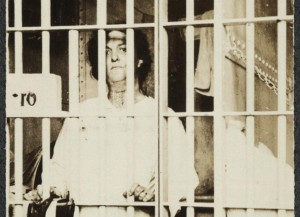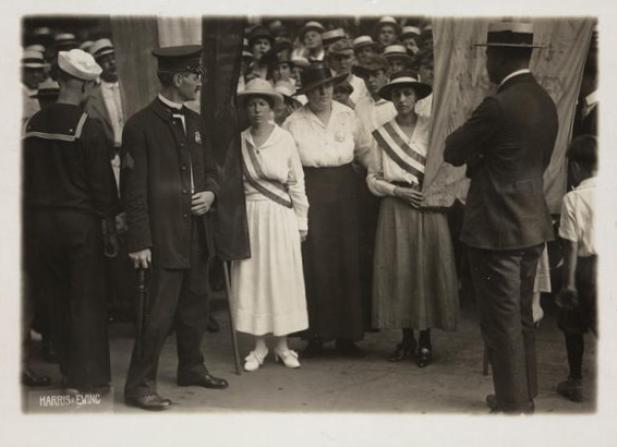By Steve Thornton
On a cold winter morning in March 1919, the “Prison Special” pulled into the Union Place train station in Hartford. Departing from a passenger car were 25 women from all walks of life who had one thing in common—they had all been thrown in jail for demonstrating in front of the White House in support of women’s right to vote.
The suffragists riding the Prison Special traveled from city to city to rally the public in support of their cause. In Hartford, they spoke first at the Municipal Building and were welcomed by Mrs. Thomas Hepburn, the chair of the state’s National Women’s Party. The group included 75-year-old Mary Nolan and young Lucy Burns who had been arrested six times in front of Woodrow Wilson’s home.
Suffragists Face Prison, Abuse, and Slurs
Local women had also been among those arrested in acts of civil disobedience. Edna Purtell of West Hartford was one of the youngest of the hundreds of suffragists who took part in the actions. According to Purtell, a prison guard broke two of her fingers when she refused to remove her suffragist sash in jail.

Suffragette Helena Hill Weed of Norwalk, serving a 3 day sentence in D.C. prison for picketing July 4, 1917 – Library of Congress, Prints and Photographs Division
Such activity was upsetting to opponents of women’s right to vote. Mrs. Daniel Markham, head of Connecticut’s anti-suffrage movement, warned that the “suffs” were allied with Reds and were trying to incite class and race hatred. Others predicted “racial decadence” if suffrage was passed.
The US suffrage movement began in the 1840s with Susan B. Anthony and Elizabeth Cady Stanton. By 1914, eleven states had granted full voting rights to women. Connecticut had defeated suffrage in 1917 and was still debating the pros and cons of the vote when the Prison Special arrived in the city.
Dressed in prison garb or in the clothes from countries where women had the franchise, the Prison Brigade walked to the Allyn House for a fundraising breakfast organized by local sponsors. They were greeted by 250 supporters, including a wide range of Hartford women: “colored sympathizers, women munitions workers, Bolshevists and Socialist sympathizers” as one newspaper account put it. The women raised $500 that day. The 19th Amendment to the US Constitution was finally adopted by Congress in 1920. Edna Purtell died in 1985 at the age of 86.
Steve Thornton has been a labor union organizer for 35 years and writes on the history of working people.
This article originally appeared on ShoeLeatherHistoryProject.com









